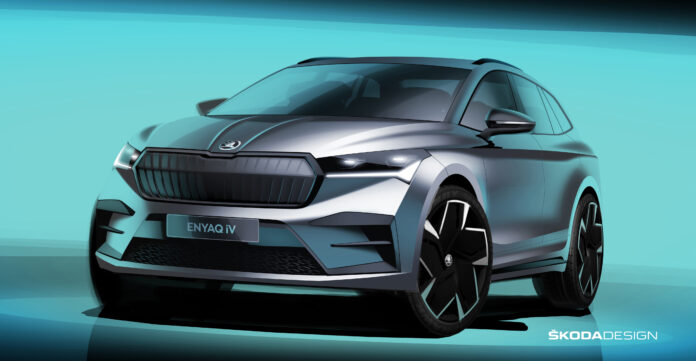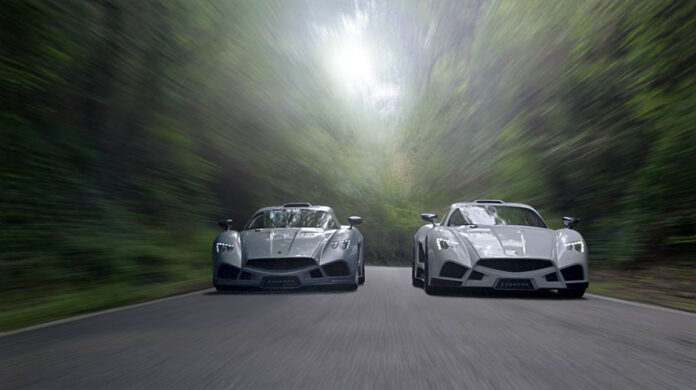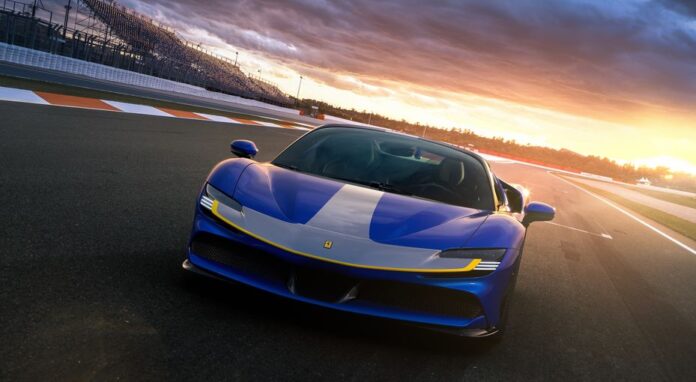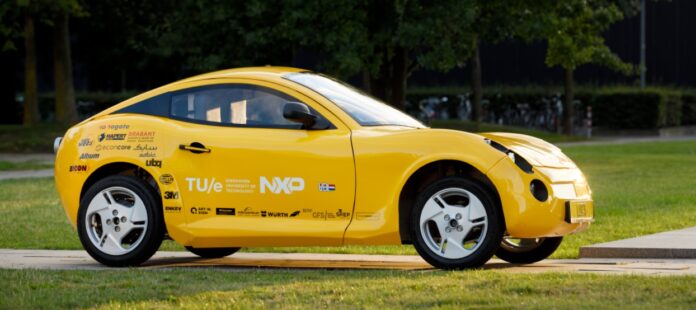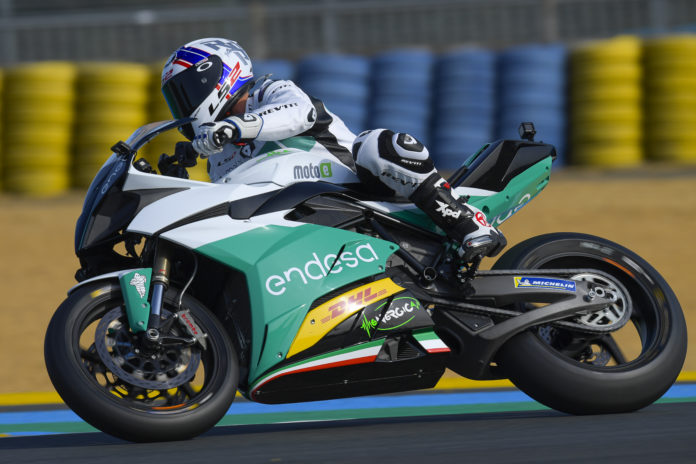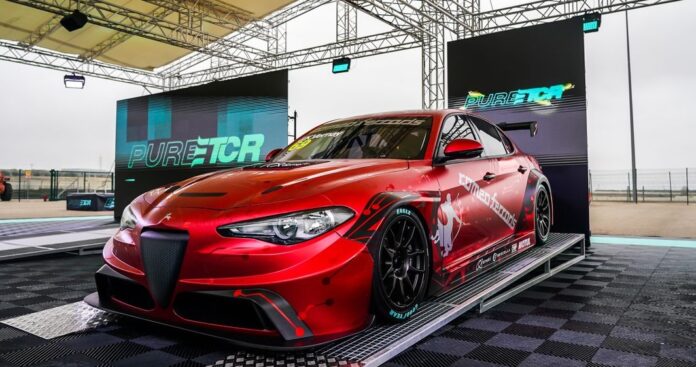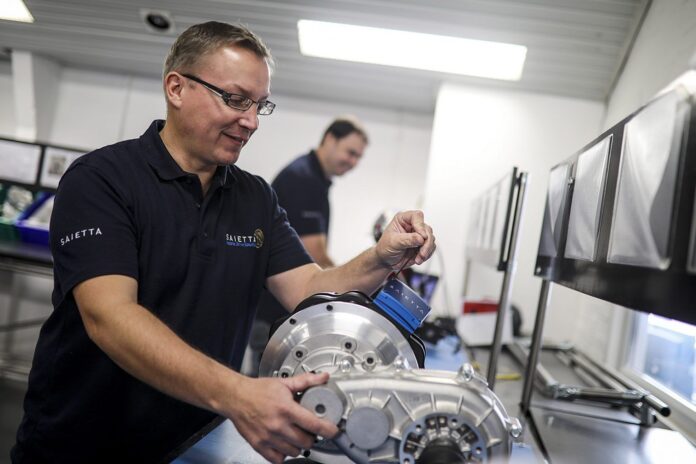The Enyaq iV SUV of Skoda has made its official debut on 1 September 2020. It is the first Skoda model based on the modular electrification toolkit (MEB) which offers a generous interior and a sustainable yet fun driving experience. And, important, it’s a brand new fully-electric SUV that promises a range of up to 316 miles.
With the ENYAQ iV, ŠKODA is taking another leap into the era of electric mobility.
The Czech car manufacturer’s first all-electric SUV also takes a fresh approach to lighting design, combining technically innovative full-LED matrix headlights with an emotive design language.
In the UK, it is possible to choose from either ‘60’ or ‘80’ badged cars: the former employing a 62kWh battery pack and 132kW motor (176bhp), the latter an 82kWh battery and 150kW (200bhp) motor, both sending their respective outputs to the rear wheels alone.
The car provides also ‘Laura’, onboard digital voice assistant, able to understand 15 languages
World premiere: Skoda, the electric SUV class with 316-mile range
Start-up for full-electric supercars
The mission of the innovative start-up Mazzanti Automotive Testing & Innovation Lab, consisting of Mazzanti Automobili, Italian manufacturer of craft Supercars custom-designed and of Netcom Group, Neapolitan engineering company, is manufacturing, in a specific factory in Campania, high-performance electrified and also full-electric motors for supercars.
The project, in which take part also the Italian University spinoffs eProInn and ePowerIng, aims at developing innovative solutions, starting from the ones that can be immediately implemented on Mazzanti Automobili cars and developing on-board devices to make them safer and more technological.
This partnership intends to create advanced electrical technologies, giving soon the opportunity of consolidating a primacy of quality and technological content of high prestige in Italy and in Campania territory, besides innovating the manufacturing modalities in the modern automotive, maintaining high craftsmanship and customization.
Plant ready for BMW i4
After six weeks of activity, the works in Munich plant, where they will manufacture the BMW i4 electric car, have been accomplished. It was necessary to intervene on the assembling system because the manufacturing concept of the new model is different from conventional architectures. The assembling is fully automated and uses camera systems to control automatically if the 550-Kg battery pack is correctly positioned on the line.
Moreover, the production plant is equipped with a new aerial electric conveyor, together with conveyors in the vehicle arrival zone.
The new sedan will have an electric motor featuring 530 HP of power, will adopt the fifth-generation eDrive technology and will reach the same performance level as a V8 combustion engine.
The motor power supply is entrusted to an 80 kWh battery, with modern cell technology, which guarantees 600 km of autonomy.
The recharge is supported up to 150 kW and in 6 minutes it is possible to recharge the sufficient energy to travel for about 100 kilometres, whereas in about 35 minutes you refill 80% of energy.
The BMW i4 release is expected in 2021.
The new hybrid plug-in by Ferrari
Extraordinarily fine. SF90 Spider, convertible version of the SF90 Road, it is not only the first Ferrari series plug-in hybrid spider, but it also represents the absolute reference in terms of drive performance, innovations and emotions compared to the range by Maranello Company and the production of the whole sports car sector.
It is a disruptive car, for those aspiring to the highest level of Ferrari technology and wishing to be excited by its performances without giving up versatility and the drive pleasure with open top assured by RHT (Retractable Hard Top), factory trademark of the spiders by Prancing Horse since 2011.
The hybrid plug-in system of SF90 Spider assures it top performances: the 780 HP turbo motor is in fact joined by three electric motors, one at the rear and two on the front axle, which raise the maximum available power to as many as 1000 HP.
However, the great refinement of this plant does not imply complications for the pilot because the sophisticated control logic autonomously supervises the energy flow management according to use conditions.
Therefore, the driver’s only task is setting up one of the use modalities of the power unit (eDrive, Hybrid, Performance and Qualify) that can be selected by the brand-new eManettino and let emotions free.
Like the SF90 Road, also the SF90 Spider is equipped with four-wheel drive on-demand, an absolute première for the sports cars by Maranello Company that allows the car to turn into the new benchmark for the standing start: 0-100 km/h in 2.5 s and 0-200 km/h in 7.0 s.
The adopted architecture has allowed engineers to enhance also the management logic of the dynamic car control, now called eSSC: the system constantly assesses the dynamic vehicle conditions and checks its driving stability and front electric motors, in order to manage independently the torque applied to the inner and outer wheel (Torque Vectoring), significantly improving traction out of corners and allowing the pilot to reach the limit in full simplicity and safety.
The electric sports car that stems from wastes
Implemented in about 18 months by 22 Dutch students of the Tu/ecomotive team University of Technology, Luca is a prototype of two-seater sports electric car, which boasts a green soul indeed.
The vehicle is equipped with two electric motors, one for each rear wheel, and its weight is just 360 kilograms, with the addition of 60 kg of batteries.
The great peculiarity? Luca has been fully made with wastes, including the plastic fished out of the ocean, recycled Pet bottles for the frame and unsorted household wastes for interiors, which include also two very comfortable customized seats, whose cushions are made with a combination of coir and horsehair.
For the bodywork, they have used recycled Abs, a hard plastic drawn from landfill materials such as TV sets, toys and kitchen appliances.
The two-seater with sports look has a yellow livery made with the application of a film, then easily removed to be recycled again.
Considering wastes as precious material in a car with sports look is then the outstanding frontier exceeded by the team of the project manager Lisa van Etten. «We hope– stated Matthijs van Wijk, member of Tu/ecomotive team – that automotive companies will start using waste materials, already feasible for many applications. We wanted to demonstrate it is also possible to make a frame with them».
The updated version of the MotoE all-electric superbike prototype
The partnership between CRP Group’s specialized companies and Energica Motor Company to fine-tune the all-electric superbike for the 2019 FIM Enel MotoE™ World Cup goes full steam ahead: an updated version of the MotoE prototype made its first public appearance on-track for testing during the French MotoGP™. The test was carried out by both Loris Capirossi and the Energica official test rider Alessandro Brannetti.
All the solutions have been developed with the support of CRP Group’s know-how. CRP will keep going on collaborating closely with Energica, to achieve optimal results in a very short time.
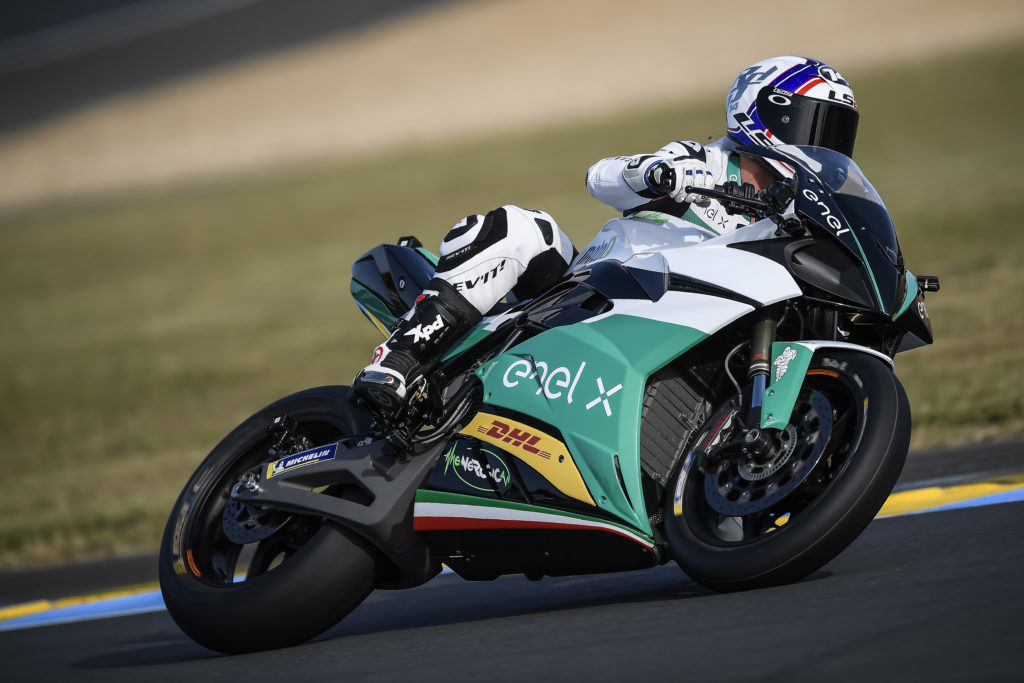
CRP Technology (the CRP Group’s specialized company in the field of laser sintering and Windform composite materials) is manufacturing aerodynamic parts in professional 3D printing with Windform materials. CRP Meccanica (since over 45 years alongside F1 teams as strategic partner for the production of hi-tech mechanical components) is working on the development of the braking and suspension system.
The know-how of the two companies are supporting the study and development of the new battery.
All these elements have improved the general performance of the superbike, bringing it closer to the preset targets.
The next stop on the road to the 2019 FIM Enel MotoE™ World Cup will be at CRP and Energica’s home GP in Mugello, with a very special rider for the demo lap: the four-time World Champion Max Biaggi.
Electric van, what Modul-System as conversion partner
LEVC – London Electric Vehicle Company – has announced its first official conversion partner for its new VN5 electric van. It’s Modul-System, the largest global vehicle racking manufacturers that will support LEVC across multiple key European markets.
Modul-System has been operating for over 40 years and offers high quality, custom and lightweight vehicle racking solutions specifically designed to meet the demanding and ever-changing needs of the commercial vehicle market.
The company has already provided conversions for LEVC’s VN5 prototype ‘trial fleet’ of converted TXs that are being used by a wide range of businesses including logistics giants DPD and Royal Mail, as well as telecoms flagship, BT Group.
Revealed the new electric racing Alfa Romeo
Alfa Romeo Giulia ETCR by Romeo Ferraris is the electric variant intended for the Pure ETCR championship starting next year and including cars exclusively powered by electric motor.
The presentation took place recently at Aragon, fascinated by the splendid red called Romeo Ferraris Red to mark a border with the iconic Alfa Red.
Aerodynamics is perfectly cared and Pure ETCR electric motors adopt an accumulator with control modules implemented by Williams Advanced Engineering with propulsion system manufactured by Magelec Propulsion.
The propulsion package adopts four M21Sx-x-19 MGU motors with fluid cooling and 500 kW peak power, i.e. 680 HP able to introduce 960 Nm torque.
Motors are perfectly modular and can be positioned on the rear axle, coupling two on each wheel with transversal arrangement.
The transmission is two-stage with single speed of Omni Gear F06V1-Z-19HXYY type. Giulia ETCR (like the others of the series) adopts the rear-wheel drive while the canonical 0-100 km/h is travelled in just 3.2 seconds with 270 km/h. maximum speed.
The higher weight burden is caused by the battery that weighs 450 kilograms and is positioned between the two axles.
In the centre of Europe, new facility for electric drivetrains
Global Japanese automotive supplier Marelli will open a production facility for electric drivetrains in Cologne, Germany and the start of production is targeted for the first half of 2021.
A step back: through combined expertise in both electric drives and thermal energy management systems, Marelli offers a unique technology portfolio enabling the design of highly efficient electric vehicle platforms.
In the new German facility, will employ around 160 people and the production line for electric drivetrains will be installed on 18,000 sqm, while there is space for a potential future expansion.
«With the new production facility – said Joachim Fetzer, CEO of Marelli’s Electric Powertrain business – we are expanding our manufacturing footprint and capacities for this important growth market. We have chosen Cologne for its location in the heart of Europe, as we find highly skilled employees with experience in the auto industry here and as the region is developing into a center for e-mobility».
Brandauer is working to develop new green motor technology
English manufacturer Brandauer secured £500,000 funding boost for clean transport project.
The company has been selected to be part of a new consortium led by tech company Saietta, which has won an Advanced Propulsion Centre (APC) grant to fast-track production on new electric propulsion motors for use in all vehicles from scooters through to buses.
The unique Axial Flux Traction technology delivers class-leading performance at the price points required for mass market adoption and marks a step-change in how the sector can make electric vehicles go faster for longer.
Production specialists at the Birmingham-based firm will use their thin gauge stamping and progression toolmaking expertise to produce busbars and laminations for use in the state-of-the-art motors.
The APC research contract will enable Saietta to ramp up production capacity to 150,000 motors per annum and trigger the hiring of 150-250 highly skilled engineers in the first round of recruitment.
Saietta will work closely with Brandauer and The AEV Group, a specialist in the manufacture of electrical insulating resins, varnishes and compounds, on refining the process for core motor component manufacturing and motor assembly, thereby delivering a cost effective, highly automated production assembly process.

